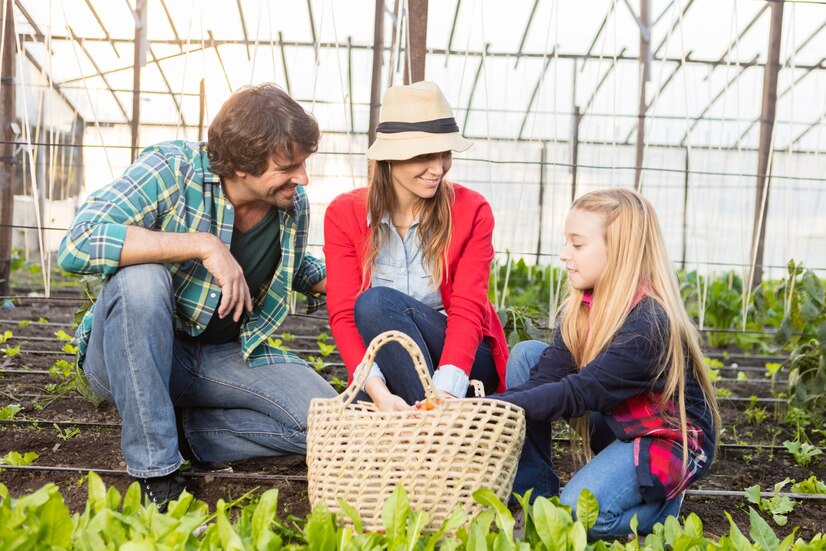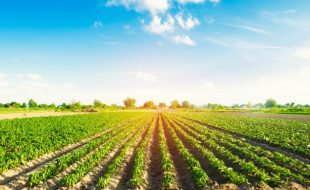Table Of Contents
How To Start A Small Farm In A Rural Area? – Steps To Follow
Last Updated on: September 16th, 2024
Agriculture is the most important industry in the country, so starting a small farm is a great idea. This business will not only offer you the satisfaction of producing nutritious food and fresh products but will also offer you the chance to live a life the way you want.
In this article, you will learn about how to start a small farm in a rural area. This article will give you details of all the important conditions you need to consider. Hence, to learn more, read on to the end of the article.
Why Is Starting A Small Farm A Great Idea?

With various technological progress and the need for sustainable produce, many people are turning towards agriculture. Furthermore, agriculture also offers more freedom to the individual when it comes to work. Apart from that, it also helps the individual focus more on mental well-being.
Many individuals are buying small farms out of a deep desire to connect with land. However, when you start your small farm, you will need to consider what you want to produce. Moreover, it is also important to consider whether you will make enough in the local area. This depends on the need.
Furthermore, you will also need to consider various land regulations and legal aspects when you own a small farm. Hence, you can follow the section below to get a better overview.
Steps To Follow To Start A Small Farm In A Rural Area

The following are some of the factors you need to consider if you want to start a small farm in a rural area:
1. Research And Secure The Land
Your first step is to research and secure the land. Before you meet with your realtor, do your fact-finding. You’ll need to check the zoning laws to determine whether or not you can legally farm on a particular piece of land.
This will also help you determine what type of farming operations are allowed on the property (e.g., dairy cows vs goats vs vegetables). If you are looking for acreage for sale in Jacobs Well, contact JMO Property Group, as they are an expert in the area.
You’ll want to make sure that there aren’t any environmental hazards on the property, such as contaminated water sources or old oil wells that haven’t been properly capped off and enclosed within fencing.
Wildlife is another thing worth considering: will deer eat all of your crops? Is there an area where coyotes may be lurking around? If so, how can you keep them out of your garden while still allowing other wildlife species safe passage through it?
There are many factors worth considering when looking at a piece of farmland with potential for farming. This section only consists of the important ones, for starters!
2. Get Land And Permits
Here are a few aspects you must consider for legal and regulatory compliance:
- Get legal permission to use the land. You must get permission from the local government and other landowners before using a piece of land for farming. This is important even if you are purchasing land or leasing it, as well as obtaining all necessary permits.
- Get permission from the local government.If you’re operating a farm that sells products on-site, you’ll need to obtain a business license. Additionally, you need other licenses relevant to your specific industry (for example, if you’re selling products directly at farmers’ markets).
- Make sure you have the right insurance coverage for your business. Also,verify that this insurance extends beyond just property damage. Furthermore, it must cover personal injury claims related to any accidents occurring on your property if any visitors come onsite throughout the season.
- Purchase equipment that will help with daily tasks such as watering plants or harvesting crops. Here, you mustmake sure these tools can withstand harsh weather conditions like droughts or extreme heat waves. This way, you can ensure they don’t break down unexpectedly during times when it is difficult to repair.
3. Explore Land Management Options
Renting land is the first option you should consider. You can rent land from any number of landowners who don’t plan to use it but show interest in receiving monthly payments for its use.
When renting, you must have a written agreement in place. Ensure that both parties can understand their rights and responsibilities as well as any potential consequences that may arise if either party fails to live up to them (i.e., not paying rent on time).
Leasing land is another option for small farmers who are:
- looking to start their farmin an area where there aren’t many organic farms nearby.
- staying in a place where access to land isn’t easy enough for purchasing In such cases, only leasing might work better than buying. This is becauseleasing costs are lower than buying. Also, this includes less upfront capital that a farmer needs before starting operations while still providing access
4. Know Your Soil And Animal Feed
Here are a few aspects you need to consider:
- Knowing your soil type is important, as this will help you determine what plants grow best in the area.
- The soil pH is another important thing to consider when planting crops. It helps you know whether or not a certain type of plant can thrive in that specific area.
- Soil nutrients are another thing to keep in mind while planting crops and animals on your property. These include things like nitrogen, potassium, and phosphorus, which are essential for growing healthy plants and animals.
5. Create A Business Plan
A business plan is a written document that helps you define your vision, goals, and strategy for the future. Basically, it is an important document that can help you assess whether or not your small farm will be successful in the long term.
If you don’t have experience creating a business plan, here’s what you need to do to start:
- Figure out what type of information you must includein your plan.
- Research how other people make a business planso that you can get ideas on how to write yours
- Use an outline as a guide while writing your business plan
6. Gather Equipment
Now that you’ve found a property, it’s time to start gathering the equipment. Here, the first thing you should collect is a tractor, truck, and trailer. Generally, the cost of this will vary depending on what kind of vehicle(s) you get.
For example, if you can find an older model with low miles and good tires that has been well maintained. Then, your costs might be as low as $2K each for all three vehicles (if they’re used).
Instead, you might buy brand-new farm and machinery sales with upgraded diesel engines and automatic transmissions at premium prices (because they are currently in high demand). In this case, you can expect your expenses to average out around $20K-$30K per vehicle!
7. Pick A Crop Or Livestock
To successfully start a small farm in a rural area, you need to pick a crop or livestock that suits your land. You should also pick one that you enjoy working with and will be profitable. Moreover, it is important to choose something easy to grow as well as harvest. Stock on some chicken feed if you are having chicken coops.
8. Buy Some Wild Animal Traps
Here are a few aspects to consider when you are buying wild animal traps:
- You may buy wild dog traps However, be sure to buy your traps from a legitimate source so you can be certain that the traps are safe for humans and animals.
- Have the proper equipment. Basically, you will need to have ratchet-style locking pliers to set the trap. Also, you need an unbaited live capture trap made of heavy gauge wire mesh with smooth edges (so it won’t injure people or pets who come in contact with it).
- Use quality equipment. Choose a good quality trap. Make sure its build quality is good enough so that it doesn’t spring. This is common when animals or people accidentallystep on them or, worse yet, set them off while holding them!
9. Create A Farm Budget
A farm budget will help you keep track of your expenses and income. Generally, it is important to be realistic about the costs of starting a farm. This is because if you plan for too little money, it can lead to stress and burnout. Also, it is important to keep on top of your finances.
A good way of doing this is by creating a yearly farm budget that includes all your expenses (like seeds and equipment). Furthermore, you can also add other possible income sources, such as selling products or hosting workshops on-site.
Wrapping Up
Finally, you can see that Starting a small farm is a great way to get back to your roots. This allows you to be more self-sufficient and feed your family fresh produce. Also, it is a smart investment in the long run because it can help you save money on grocery bills while providing an income stream.
Do you have more suggestions on how to start a small farm with minimal investments? Please share your ideas and opinions in the comments section below.
Read Also:














